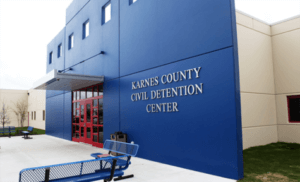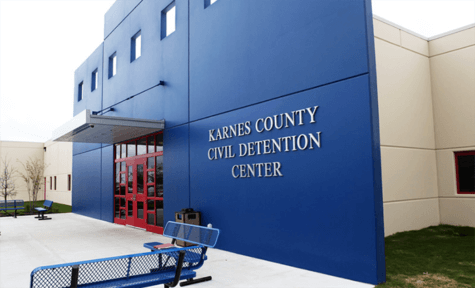LAWRENCE, Kan. — Immigration detention centers are less comfortable than chaotic, leaving those residing in the temporary shelters feeling like prisoners, a new study finds.
Researchers at the University of Kansas spoke in depth with lawyers who had represented immigrants placed in detention facilities, asking them about living conditions, overcrowding, the role of law enforcement, and various personal experiences.

Contrary to how the Immigration and Customs Enforcement (ICE) agency warmly describes the centers, the attorneys said that, in practice, they resemble jails and prisons.
Oftentimes, detention centers are built in remote locations, making it hard for detainees to effectively reach family, or receive legal assistance, the attorneys explained.
Most have thick concrete walls; heavy, guard monitored doors; small windows, if any at all; high fences; and floodlights. Detainees are often enclosed with numerous others, forced to share beds and bathrooms.
“Even though we know how similar those conditions are to prisons, the language that is used to describe those centers is very benign,” comments lead researcher Cecilia Menjívar in a university press release. “Officials refer, for instance, to the centers as family centers, or they want the centers to be certified as child care centers. The language used is very neutral, even child- and family-friendly, as if it’s just a holding place, but in fact, that’s not the case at all.”
Menjívar emphasizes how the public narrative that surrounds immigrant detention centers is far detached from reality.
Living conditions of immigrant detainees have only grown in importance, considering the increased scope of immigration enforcement over the past decade, particularly under the current administration.
The researchers also examined the practice of the federal government outsourcing immigration incarceration services to private companies.
Overall, the privatization of prison services leads to “the expansion of incarceration for people of color,” Menjívar concludes.
The study’s findings were presented at the American Sociological Association’s mid-June annual meeting in Montreal.

What would you expect?
These people are here illegally. Are we supposed to care if they’re comfortable? As for overcrowding, there are too many of them and not enough shelters to put them in, so yes, they’re overcrowded. Some countries wouldn’t bother to feed them or give them medical help, which we do, even though they are breaking our laws.
Are you joking? Most of these people are entering the country illegally – they can hardly think they are going to be put up in 5-star hotels. That said, in NYC they did just that and the illegals trashed them. Of course, the taxpayers will be picking up the cost…